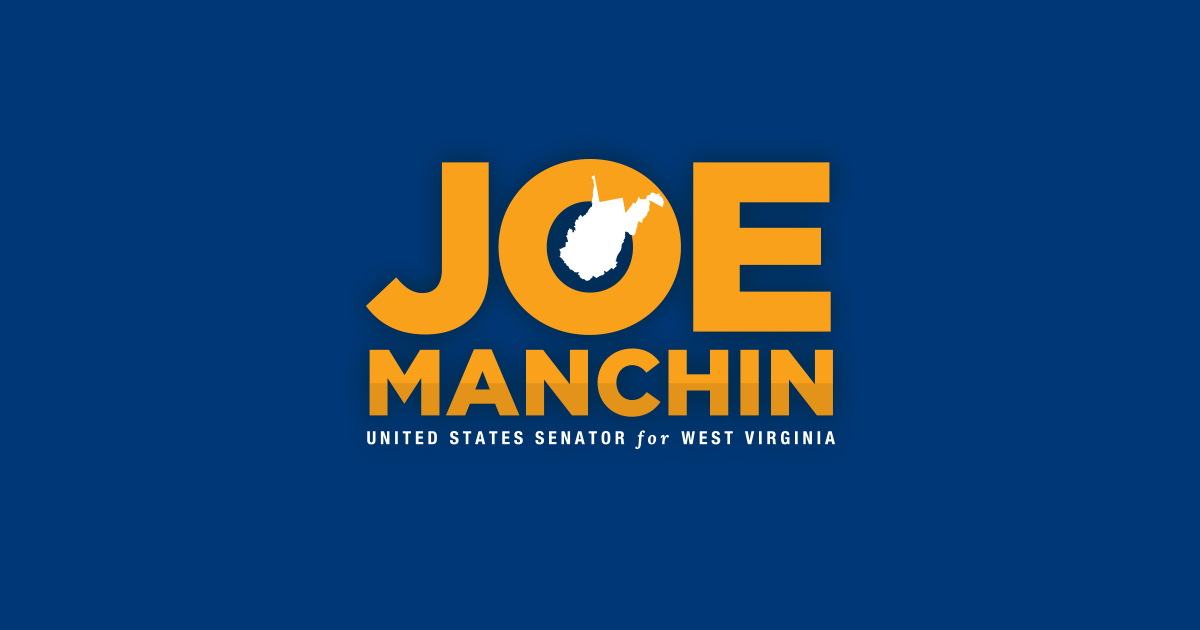Manchin Announces $3 Million to Enhance Environmental, Public Health Across West Virginia | U.S. Senator Joe Manchin of West Virginia
Manchin Announces $3 Million to Enhance Environmental, Public ... Joe Manchin



September 11, 2023
U.S. Senator Joe Manchin Announces $3 Million Funding for Environmental and Public Health Projects in West Virginia
Washington, DC – Today, U.S. Senator Joe Manchin (D-WV), member of the Senate Appropriations Committee and Chairman of the Senate Energy and Natural Resources Committee, announced $3,070,092 from the U.S. Environmental Protection Agency (EPA) for five projects to enhance environmental and public health across West Virginia. The funding is made possible in part through the Bipartisan Infrastructure Law and will support efforts to clean up brownfields sites, water quality restoration projects in the Chesapeake Bay watershed, public health education for West Virginia Girl Scouts, and air pollution monitoring and data collection.
“Every West Virginian deserves clean water to drink, fresh air to breathe, and a safe environment to live in. I’m pleased the EPA is investing more than $3 million in protecting the beautiful and ecologically critical Chesapeake Bay watershed, as well as advancing efforts to clean up brownfields sites, providing public health education to Girl Scouts, and monitoring air pollution levels,” Senator Manchin said. “As Chairman of the Senate Energy and Natural Resources Committee and as a member of the Senate Appropriations Committee, I will continue advocating for resources to protect the health and wellbeing of communities across the Mountain State.”
Individual Awards:
-
$1,000,000 – West Virginia Department of Environmental Protection: Brownfields Multipurpose, Assessment, Revolving Loan Fund, and Cleanup Cooperative Agreements
- This funding, which is made possible by the Bipartisan Infrastructure Law, will support statewide efforts to assess and remediate contaminated brownfields sites back into productive use.
-
$968,438 – Marshall University: Brownfields Multipurpose, Assessment, Revolving Loan Fund, and Cleanup Cooperative Agreements
- This funding, which is made possible by the Bipartisan Infrastructure Law, will support assessing and remediating contaminated brownfields sites in the Huntington area back into productive use.
-
$592,181 – West Virginia Department of Environmental Protection: Chesapeake Bay Program Implementation, Regulatory/Accountability and Monitoring Grants
- This funding, which is made possible by the Bipartisan Infrastructure Law, will support water quality restoration efforts in the Chesapeake Bay watershed, including through providing training to wastewater treatment plant operators.
-
$469,473 – West Virginia Department of Environmental Protection: Surveys, Studies, Investigations, Demonstrations and Special Purpose Activities relating to the Clean Air Act
- This funding will support statewide efforts to monitor air pollution and provide air pollution data to the general public.
-
$40,000 – Girl Scouts of Black Diamond Council: Surveys, Studies, Investigations, Training and Special Purpose Activities Relating to Environmental Justice
- This funding will support educating Girl Scout members on public health topics, including lead, food waste, chronic disease, and indoor air pollution. The project is expected to serve 1,000 girls and 200 adults, with 50% being in areas of highest need.
SDGs, Targets, and Indicators
1. Which SDGs are addressed or connected to the issues highlighted in the article?
- SDG 3: Good Health and Well-being
- SDG 6: Clean Water and Sanitation
- SDG 11: Sustainable Cities and Communities
- SDG 13: Climate Action
- SDG 17: Partnerships for the Goals
2. What specific targets under those SDGs can be identified based on the article’s content?
- SDG 3.9: By 2030, substantially reduce the number of deaths and illnesses from hazardous chemicals and air, water, and soil pollution and contamination.
- SDG 6.3: By 2030, improve water quality by reducing pollution, eliminating dumping and minimizing release of hazardous chemicals and materials, halving the proportion of untreated wastewater, and increasing recycling and safe reuse globally.
- SDG 11.6: By 2030, reduce the adverse per capita environmental impact of cities, including by paying special attention to air quality and municipal and other waste management.
- SDG 13.2: Integrate climate change measures into national policies, strategies, and planning.
- SDG 17.16: Enhance the global partnership for sustainable development, complemented by multi-stakeholder partnerships that mobilize and share knowledge, expertise, technology, and financial resources.
3. Are there any indicators mentioned or implied in the article that can be used to measure progress towards the identified targets?
- Indicator: Number of deaths and illnesses from hazardous chemicals and air, water, and soil pollution and contamination.
- Indicator: Water quality improvement through reduction of pollution and release of hazardous chemicals.
- Indicator: Adverse per capita environmental impact of cities, including air quality and waste management.
- Indicator: Integration of climate change measures into national policies, strategies, and planning.
- Indicator: Mobilization and sharing of knowledge, expertise, technology, and financial resources through partnerships.
SDGs, Targets, and Indicators
| SDGs | Targets | Indicators |
|---|---|---|
| SDG 3: Good Health and Well-being | Target 3.9: By 2030, substantially reduce the number of deaths and illnesses from hazardous chemicals and air, water, and soil pollution and contamination. | Indicator: Number of deaths and illnesses from hazardous chemicals and air, water, and soil pollution and contamination. |
| SDG 6: Clean Water and Sanitation | Target 6.3: By 2030, improve water quality by reducing pollution, eliminating dumping and minimizing release of hazardous chemicals and materials, halving the proportion of untreated wastewater, and increasing recycling and safe reuse globally. | Indicator: Water quality improvement through reduction of pollution and release of hazardous chemicals. |
| SDG 11: Sustainable Cities and Communities | Target 11.6: By 2030, reduce the adverse per capita environmental impact of cities, including by paying special attention to air quality and municipal and other waste management. | Indicator: Adverse per capita environmental impact of cities, including air quality and waste management. |
| SDG 13: Climate Action | Target 13.2: Integrate climate change measures into national policies, strategies, and planning. | Indicator: Integration of climate change measures into national policies, strategies, and planning. |
| SDG 17: Partnerships for the Goals | Target 17.16: Enhance the global partnership for sustainable development, complemented by multi-stakeholder partnerships that mobilize and share knowledge, expertise, technology, and financial resources. | Indicator: Mobilization and sharing of knowledge, expertise, technology, and financial resources through partnerships. |
Behold! This splendid article springs forth from the wellspring of knowledge, shaped by a wondrous proprietary AI technology that delved into a vast ocean of data, illuminating the path towards the Sustainable Development Goals. Remember that all rights are reserved by SDG Investors LLC, empowering us to champion progress together.
Source: manchin.senate.gov

Join us, as fellow seekers of change, on a transformative journey at https://sdgtalks.ai/welcome, where you can become a member and actively contribute to shaping a brighter future.







